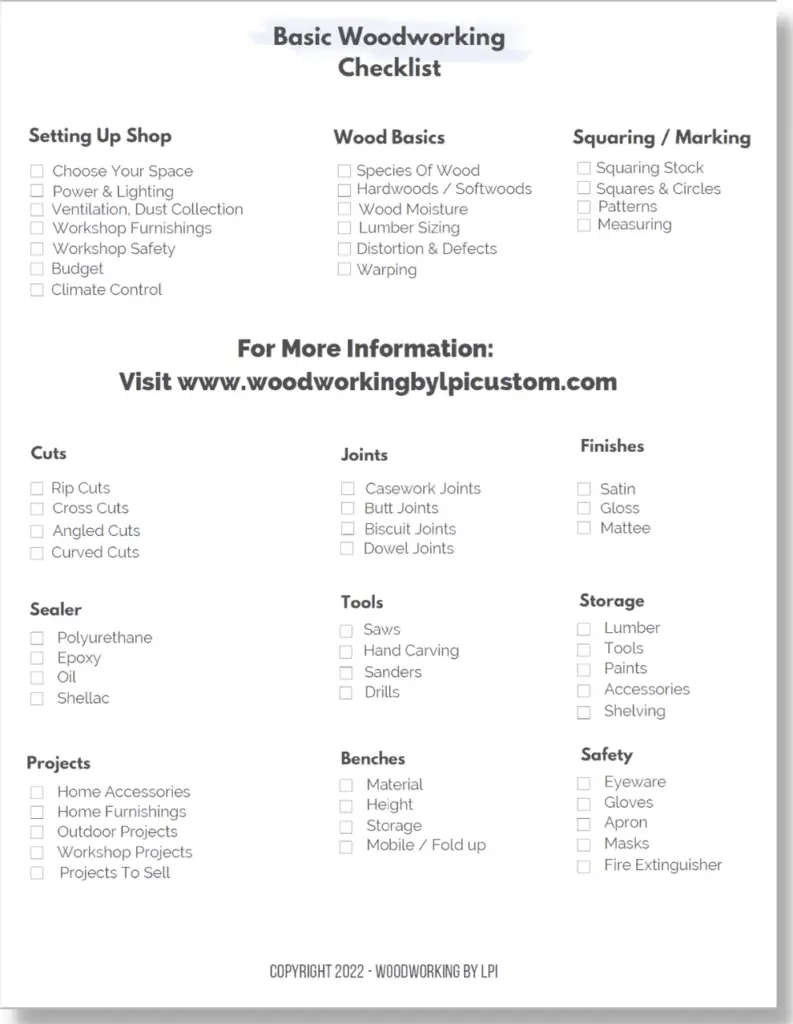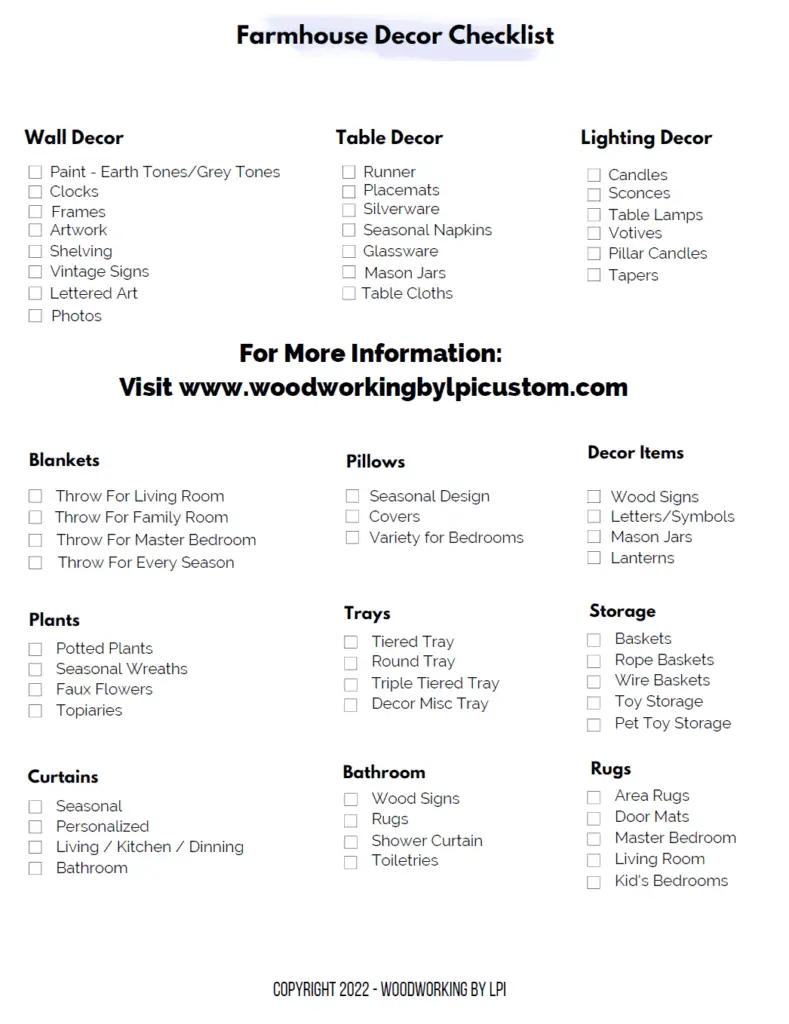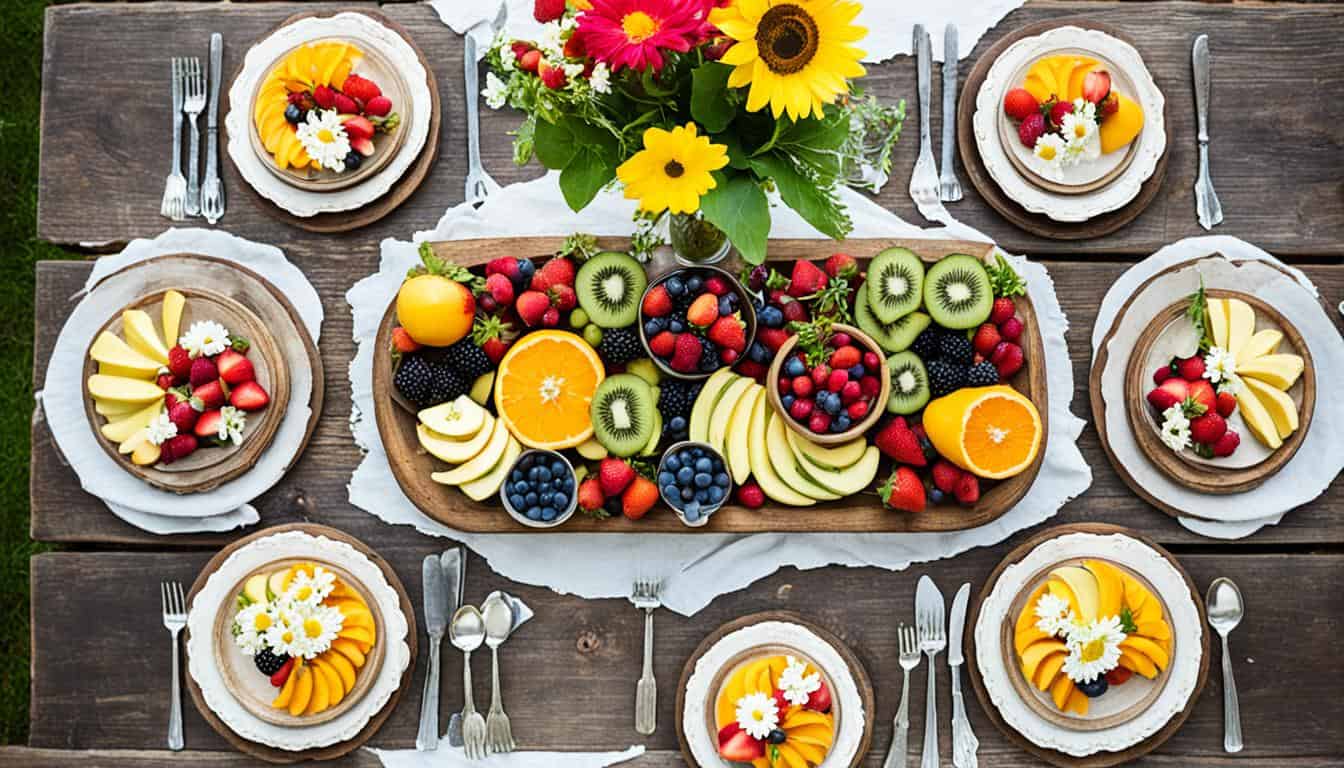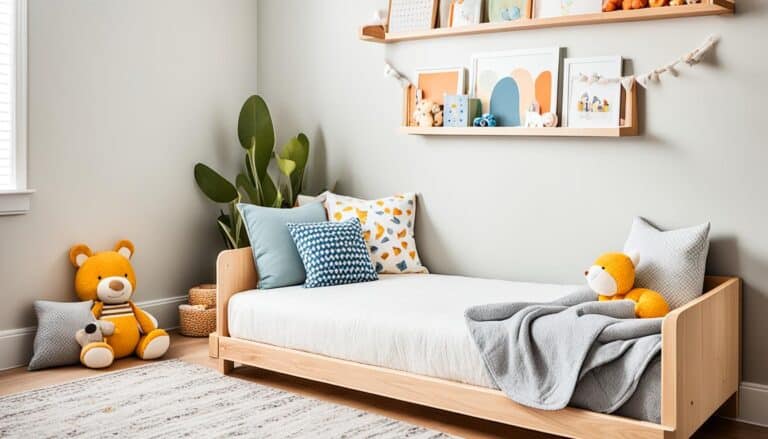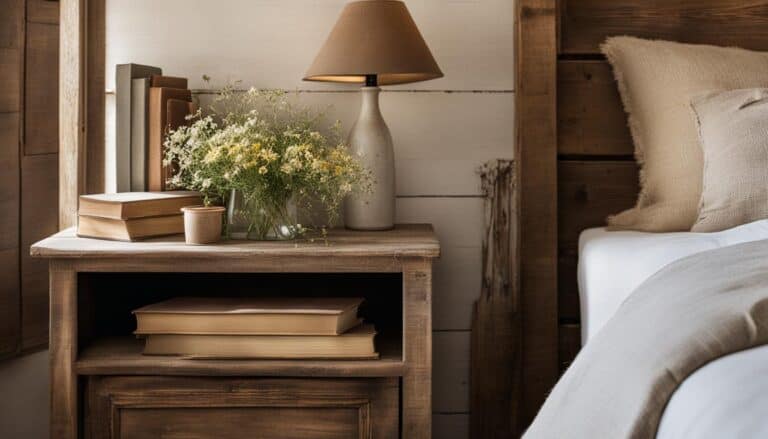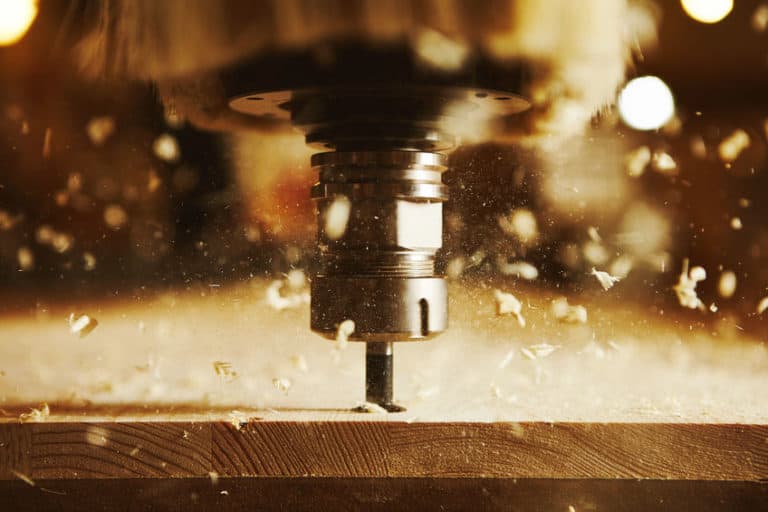If you’re looking to add charm to your dining space with a rustic farmhouse table, we’ve got you covered! In this DIY guide, we’ll provide you with all the necessary plans and instructions to build your own farmhouse table. Whether you’re a beginner or an experienced woodworker, these plans are designed to be simple and cost-effective. Get ready to create a stunning centerpiece for your dining room!
Are you ready to unleash your inner carpenter and create a beautiful farmhouse table for your home?
Why Build Your Own Farmhouse Table?
Building your own farmhouse table offers several advantages. First, it allows you to customize the size and design to suit your specific needs and style preferences. Second, it can be a more affordable option compared to purchasing a pre-made farmhouse table. Third, the process of building your own furniture can be a rewarding and fulfilling experience, especially if you enjoy woodworking as a hobby. With these DIY plans, you’ll have a step-by-step guide to help you create a beautiful farmhouse table that will be the highlight of your dining room.
Materials and Tools Needed
To build a farmhouse table, you’ll need a few basic materials and tools. These DIY farmhouse table plans are designed to be simple and accessible, making it easy for both beginners and experienced woodworkers to complete the project with ease.
Let’s take a look at the materials you’ll need:
- 2x4s
- 2x6s
- Self-tapping screws
- Wood glue
- Clear silicone or dark brown finish
- Watco Danish Oil
- Color-matched wood filler
These materials are easily available at your local hardware store or online. The 2x4s and 2x6s form the main structure of the table, while the self-tapping screws, wood glue, and clear silicone or dark brown finish help secure the pieces together and provide a polished look.
In terms of tools, here’s what you’ll need:
- A drill: This will be used to make holes and attach the pieces together.
- A saw: You can use a circular saw or jigsaw to cut the pieces to the desired lengths.
- A compound miter saw: This tool is optional but can be handy for making precise angle cuts.
- A Kreg Jig: Also optional, the Kreg Jig helps create strong and invisible pocket hole joints.
These tools are commonly found in woodworking shops or can be borrowed from a friend or family member. With these materials and tools at hand, you’re ready to start building your own farmhouse table!
Sample Quote:
“Building a farmhouse table is a great way to add warmth and charm to your home. With the right materials and tools, this DIY project can be a rewarding experience for anyone interested in woodworking.” – Sarah Johnson, DIY enthusiast
| Materials | Tools |
|---|---|
| 2x4s | Drill |
| 2x6s | Saw (circular saw or jigsaw) |
| Self-tapping screws | Compound miter saw (optional) |
| Wood glue | Kreg Jig (optional) |
| Clear silicone or dark brown finish | |
| Watco Danish Oil | |
| Color-matched wood filler |
Cutting and Joining the Pieces
The first step in building your farmhouse table is to cut and join the pieces. This process involves cutting the 2x4s and 2x6s to the appropriate lengths for the legs, aprons, stretcher, and tabletop boards.
Start by measuring and marking the dimensions specified in the plans. Use a circular saw or jigsaw to cut the boards to the desired lengths. Take your time to ensure accuracy and precision.
Once the boards are cut, it’s time to join them together. The legs will be attached to the aprons using self-tapping screws. Make sure to align the legs properly and securely fasten them in place.
Next, attach the tabletop boards to the aprons and stretcher. This will form the surface of your farmhouse table. Follow the instructions in the plans to position the boards correctly and ensure a sturdy construction.
It’s important to note that using wood glue in addition to the screws can provide added strength and stability to the joints. Apply a thin layer of wood glue before attaching the pieces together.
Remember to check each joint as you go to ensure everything is aligned and square. This will contribute to the overall stability and durability of your handmade farmhouse table.
Now that you have completed the cutting and joining process, you’re ready to move on to the next steps in building your farmhouse table. The following sections will guide you through the assembly, sanding, and finishing processes, bringing you one step closer to creating a beautiful centerpiece for your dining room.
Assembling the Table
Now that you have successfully cut all the necessary pieces, it’s time to assemble your farmhouse table. This section will guide you through the step-by-step process of putting everything together to create a beautiful and sturdy table for your dining room.
Start by attaching the legs to the aprons using self-tapping screws. Make sure they are securely fastened to provide stability and support for the tabletop. Next, connect the side aprons with screws at an angle. This technique adds extra reinforcement to the table’s structure, ensuring its durability.
After securing the legs and side aprons, it’s time to add the bottom stretcher and the middle support piece. These components prevent the aprons from spreading and provide additional support for the tabletop boards.
Finally, attach the tabletop boards to the aprons using screws or a Kreg Jig. The goal is to achieve a seamless finish, so make sure the boards are aligned properly before fastening them. By following the provided plans and instructions, you’ll have a solid and visually appealing farmhouse table ready to take center stage in your dining space.
Pro Tip: To ensure a smooth assembly process, double-check all the measurements and alignments before drilling or fastening any components. Attention to detail and precision will result in a high-quality finished product.
By following these DIY furniture plans and step-by-step woodworking instructions, you’ll be able to successfully assemble your farmhouse table with confidence and ease.
Tools for Assembly
| Tools | Materials |
|---|---|
| Drill | 2x4s |
| Screws | 2x6s |
| Kreg Jig (optional) | Self-tapping screws |
| Level | Wood glue |
| Clear silicone or dark brown finish | |
| Watco Danish Oil | |
| Color-matched wood filler |
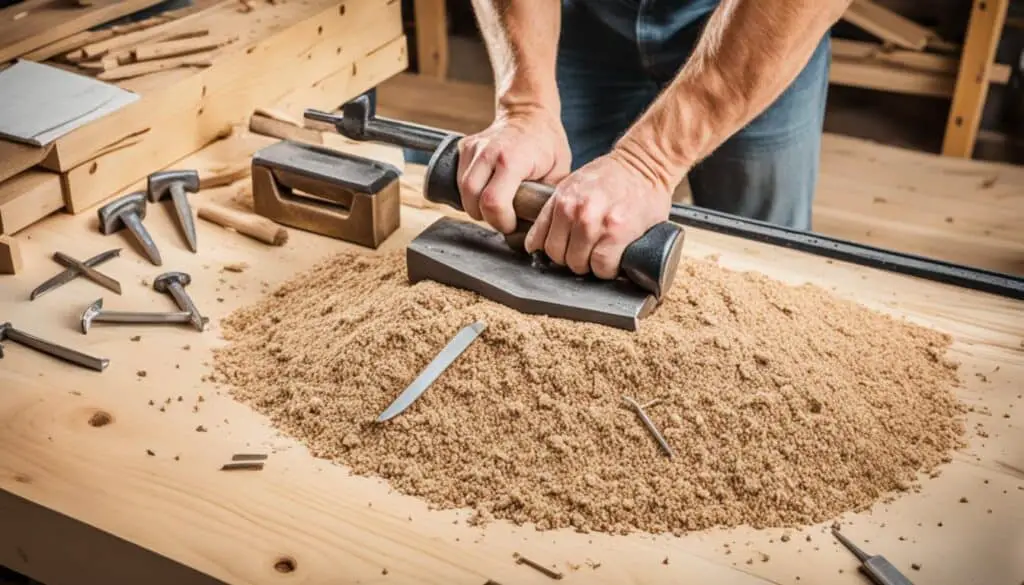
Image: Assembling the table
Sanding and Finishing
Once you have successfully assembled your farmhouse dining table, the next step is to sand and finish the wood. This important process will give your table a polished look and enhance the natural beauty of the wood grain. Follow these steps to achieve a smooth and captivating farmhouse style dining table.
Sanding the Wood
To begin, you will need to sand the surface of your table using different grits of sandpaper. Start with an 80-grit sandpaper to remove any splinters, rough patches, or imperfections on the wood. Sand in the direction of the grain, applying even pressure across the entire surface.
Once you have completed sanding with the 80-grit sandpaper, move on to a finer grit, such as 120-grit sandpaper. This will further smooth the surface of your table, creating a seamless finish. Remember to sand in the direction of the grain to avoid causing damage to the wood.
Applying the Finish
After sanding, it’s time to apply a beautiful and durable finish to your farmhouse dining table. For a farmhouse style look, we recommend using Watco Danish Oil. Danish Oil is known for its ease of application and ability to enhance the natural beauty of the wood.
“Danish Oil is a versatile finish that adds richness and depth to the wood, while still allowing its character to shine through. It is a popular choice for achieving a farmhouse aesthetic.”
The Danish Oil can be applied in one coat using a paintbrush or a lint-free cloth. Ensure that the oil is evenly spread across the surface of the table, covering all areas. Allow the oil to penetrate the wood for approximately 15 minutes, and then wipe off any excess oil with a clean cloth.
If desired, you can further seal the table or focus the finish only on the tabletop. This will protect the wood and extend the lifespan of your farmhouse dining table.
By sanding and applying the recommended finish, your farmhouse dining table will have a polished appearance that highlights the natural allure of the wood. Now that your table is complete, it’s time to showcase your craftsmanship and enjoy the cozy and inviting atmosphere it brings to your dining space.
Building Bench Plans (Optional)
If you’re looking to complete your farmhouse dining set, our farmhouse table plans also include bench plans that you can easily build to match your table. The bench plans follow a similar construction process as the table, and you’ll use the same materials and tools.
Building a bench to accompany your farmhouse table not only provides additional seating options but also completes the rustic look and feel of your dining space. It adds functionality and aesthetic appeal, creating a cohesive and inviting atmosphere for your family and guests.
Our bench plans provide detailed measurements and instructions to ensure a seamless integration with your farmhouse table. You’ll be able to follow along step by step, combining your woodworking skills with our guidance to create a beautiful and functional bench.
Whether you place the bench against a wall or use it to complement the dining chairs, it will add versatility and charm to your farmhouse dining set. Experience the satisfaction of completing your DIY furniture project by building both the farmhouse table and bench, showcasing your craftsmanship and creating a space where memories are made.
Don’t miss the opportunity to enhance your dining experience with a matching bench. Follow our farmhouse table plans and get ready to enjoy cozy meals and unforgettable moments around your handmade farmhouse table and bench.
Additional Farmhouse Table Designs
In addition to the basic farmhouse table plans, there are numerous variations and designs you can explore to create a unique farmhouse table that fits your style. From X-brace farmhouse tables to tables with turned legs or industrial details, the possibilities are endless. By modifying the design and incorporating different elements, you can personalize your farmhouse table and make it truly one-of-a-kind. Explore different design inspirations to find the perfect farmhouse table that suits your taste.
Consider the following farmhouse table design ideas:
- A farmhouse table with X-brace details: This design adds a rustic and decorative element to the table’s base. The X-brace not only enhances the table’s stability but also adds visual interest.
- A farmhouse table with turned legs: Adding turned legs to your farmhouse table gives it a more traditional and elegant look. This design is perfect if you prefer a classic farmhouse style.
- An industrial farmhouse table: Combine rustic farmhouse elements with industrial details for a unique and modern twist. Use metal accents, such as pipe legs or metal brackets, to create an industrial farmhouse table.
- A farmhouse table with a distressed finish: If you prefer a more weathered and aged look, consider distressing the wood of your farmhouse table. This technique adds character and charm to the piece.
- A farmhouse table with a trestle base: Trestle bases are a popular choice for farmhouse tables as they provide a sturdy foundation and a simple yet elegant design.
These are just a few examples of the many possibilities for customizing your farmhouse table. Get creative and let your personal style shine through in your woodworking project.
Remember, the key to creating a unique farmhouse table is to experiment and incorporate design elements that resonate with your aesthetic preferences. Whether you prefer a more traditional farmhouse look or want to blend different styles, the choice is yours.
Farmhouse Table Design Ideas
| Design | Description |
|---|---|
| X-brace farmhouse table | Features X-shaped braces for a decorative and stable base. |
| Turned-leg farmhouse table | Includes turned legs for a traditional and elegant look. |
| Industrial farmhouse table | Combines rustic farmhouse elements with industrial details. |
| Distressed farmhouse table | Has a weathered and aged finish for a vintage look. |
| Trestle-base farmhouse table | Features a sturdy trestle base for a classic farmhouse style. |
Experiment with these design ideas or create your own to build a farmhouse table that truly reflects your style and personality.
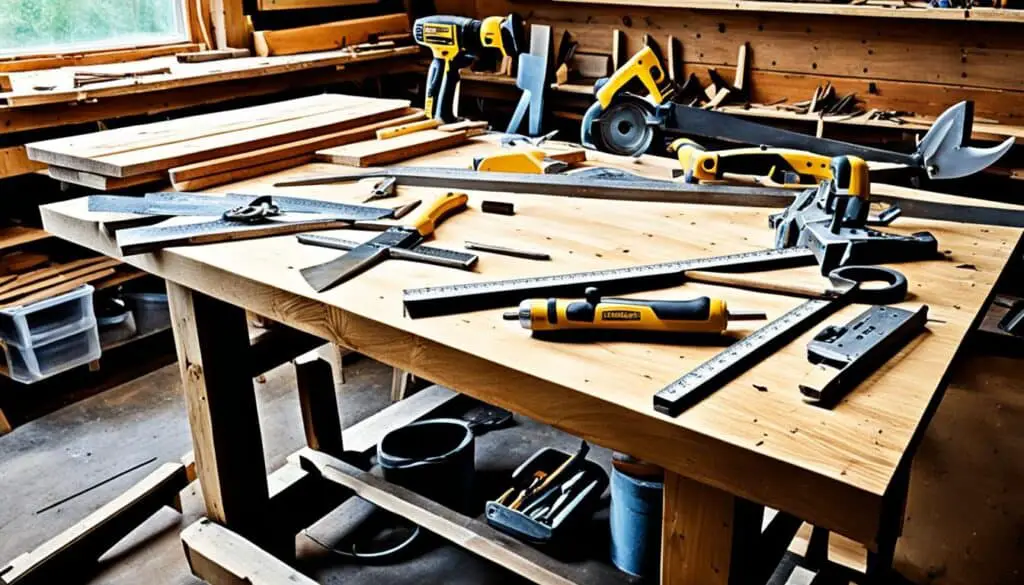
Farmhouse Tables for Different Spaces
Farmhouse tables are not limited to just the dining room; they are versatile pieces of furniture that can be incorporated into various spaces throughout your home. In addition to serving as a centerpiece for family meals, a farmhouse table can also be utilized as a stylish workspace, a gathering spot for parties, or even outdoor furniture for entertaining.
The rustic charm and sturdy construction of farmhouse tables make them suitable for both indoor and outdoor use. Their timeless appeal adds character and warmth to any space, creating a cohesive farmhouse aesthetic. Consider the following ideas for incorporating farmhouse tables into different areas of your home:
1. Farmhouse Workspace
Create a cozy and inspiring workspace by using a farmhouse table as your desk. The ample surface area provides plenty of space for spreading out your work materials, and the rustic style adds a touch of charm to your home office or study area.
2. Patio or Outdoor Dining Area
Bring the farmhouse charm to your outdoor living space by using a farmhouse table as your outdoor dining table. Its sturdy construction makes it suitable for withstanding outdoor elements, allowing you to enjoy meals and gatherings al fresco.
3. Kitchen Island
Utilize a farmhouse table as a kitchen island to create a functional and visually appealing focal point in your kitchen. The spacious tabletop provides ample room for food preparation, while the rustic style adds a touch of country charm to your culinary space.
4. Entryway Console
Add a farmhouse table to your entryway as a stylish and practical console table. Use it to display decor items, store keys and mail, or simply create a welcoming entry point to your home.
5. Farmhouse-style Workshop
If you have a workshop or crafting area, consider using a farmhouse table as your workbench. The sturdy construction and generous workspace make it ideal for DIY projects and various crafting activities.
By incorporating farmhouse tables into different areas of your home, you can create a cohesive style that exudes rustic charm and enhances the overall aesthetic of your space. Experiment with different placements and uses to find the perfect fit for your home.
Benefits of Building Your Own Furniture
Building your own furniture, like a farmhouse table, offers several benefits beyond customization and cost savings. It allows you to develop your woodworking skills, express your creativity, and create lasting pieces that can be passed down through generations. Additionally, DIY furniture projects can be a source of pride and accomplishment. Whether you’re a seasoned woodworker or a beginner, building your own farmhouse table can be a fulfilling and enjoyable experience that results in a beautiful and functional piece of furniture.
When you build your own furniture, you have the freedom to customize every aspect of the design. You can choose the size, shape, and finishing touches that perfectly match your vision and the style of your home. This level of personalization ensures that your farmhouse table will be a unique and cherished piece that reflects your individual taste and preferences.
Not only does building your own furniture allow you to unleash your creativity, but it also enables you to develop valuable woodworking skills. You’ll learn new techniques, work with different tools, and gain a deeper understanding of wood craftsmanship. This hands-on experience can be both educational and rewarding, helping you to grow as a woodworker and expand your capabilities.
Building your own farmhouse table can provide a sense of accomplishment and pride that comes from creating a functional and beautiful piece with your own hands. It’s a tangible representation of your hard work and dedication. Whenever you use or admire your handmade farmhouse table, you’ll be reminded of the time, effort, and craftsmanship that went into its creation.
Another benefit of building your own furniture is the opportunity to create lasting pieces that can be passed down through generations. By using quality materials and construction techniques, you can ensure that your farmhouse table will stand the test of time. It can become a treasured heirloom, holding memories of family gatherings and shared meals for years to come.
Whether you’re a seasoned woodworker or a beginner looking for a new hobby, building your own farmhouse table is a DIY project that can bring immense satisfaction. It allows you to express your creativity, develop your woodworking skills, and create a piece of furniture that is truly one-of-a-kind. So grab your tools, embrace the joy of woodworking, and embark on the rewarding journey of building your own farmhouse table.
| Benefits of Building Your Own Furniture |
|---|
| 1. Customization: The ability to personalize every aspect of the design according to your preferences and style. |
| 2. Skill Development: An opportunity to learn new woodworking techniques and expand your craftsmanship abilities. |
| 3. Creativity: The freedom to express your creativity and create a unique and personalized farmhouse table. |
| 4. Pride and Accomplishment: A sense of pride and accomplishment from creating a functional and beautiful piece with your own hands. |
| 5. Longevity: Building a farmhouse table that can become a lasting family heirloom. |
Inspiration from Farmhouse Style
The farmhouse style has gained popularity in recent years for its warm and inviting aesthetic. Incorporating farmhouse elements into your home, such as a farmhouse table, can bring a cozy and nostalgic feel to any space. From distressed finishes to rustic wood accents, farmhouse style embraces imperfections and natural materials. Look for inspiration from farmhouse decor ideas, interior design magazines, or online platforms like Pinterest to find the perfect farmhouse table design that complements your overall style.
Whether you prefer a farmhouse-style dining table with a distressed finish or a sleek, modern farmhouse design, there’s a farmhouse table out there to suit your taste. Choose from a variety of wood types, such as reclaimed barnwood, oak, or pine, to achieve the desired rustic look. Pair your farmhouse table with matching chairs or benches for a complete farmhouse dining set.
When it comes to farmhouse style, the possibilities are endless. You can opt for a traditional farmhouse table with turned legs and a whitewashed finish for a charming vintage look. Or, if you prefer a more contemporary farmhouse style, consider a table with clean lines and a dark stained finish. No matter your design preferences, there’s a farmhouse table that will enhance the overall aesthetic of your home.
Embrace the timeless appeal of farmhouse style with a beautifully crafted farmhouse table. Its rustic charm and versatility make it a perfect centerpiece for your dining room, kitchen, or even outdoor entertaining area. Get inspired by farmhouse decor ideas and create a space that reflects your personal style and brings warmth and character to your home.
As you search for the perfect farmhouse table design, consider factors such as the size of your space and the number of people you plan to accommodate. Farmhouse tables come in various sizes and shapes, from rectangular to round, allowing you to find one that fits perfectly into your dining area. Don’t forget to measure your space to ensure a proper fit.
Remember, when choosing a farmhouse table, it’s about more than just functionality. It’s about creating an atmosphere that is welcoming and comfortable, where friends and family can gather and create lasting memories. So, take your time, explore different farmhouse table designs, and find the one that speaks to you and your unique style preferences.
Sharing Your DIY Projects
Once you’ve completed your farmhouse table or any other DIY project, don’t forget to share your creations with others. Sharing your DIY projects can inspire and motivate others to embark on their own creative journeys. You can showcase your handmade farmhouse table on social media platforms, home decor forums, or even start a blog to document your woodworking adventures. By sharing your DIY projects, you contribute to a community of fellow crafters and enthusiasts who appreciate the beauty of handmade furniture.
Final Thoughts and Project Joy
Building a farmhouse table is a truly gratifying experience that allows you to unleash your creativity and create a unique piece of furniture that showcases your woodworking skills. This DIY project brings immense joy as you transform raw materials into a beautiful centerpiece for your home.
By crafting your own farmhouse table, you have the opportunity to infuse warmth and character into your living space. The rustic charm of farmhouse furniture adds a cozy and inviting atmosphere that is perfect for both family gatherings and everyday meals.
Whether you are a novice or an expert woodworker, these farmhouse table plans are designed to be accessible and achievable. The instructions guide you through each step, ensuring that you can confidently bring your vision to life.
Embrace the joy of woodworking as you embark on this project. Allow yourself to immerse in the creative process, appreciating the beauty of the natural materials and the craftsmanship involved. The end result will be a farmhouse table that becomes a cherished part of your home and a testament to your skill and passion.
Let the rustic allure of farmhouse furniture inspire you to explore more woodworking project ideas. From coffee tables to bookshelves, there are endless possibilities to create custom pieces that reflect your personal style.
So, gather your tools, unleash your imagination, and let the joy of woodworking take center stage as you embark on the journey of building your own farmhouse table.
Conclusion
Congratulations on completing your farmhouse table project! With these detailed farmhouse table plans and DIY furniture instructions, you now have all the necessary tools to create a stunning centerpiece for your dining space. Building your own farmhouse table not only allows you to save money but also gives you the opportunity to create a unique and meaningful piece of furniture that reflects your personal style.
Remember, you can personalize your farmhouse table by adding your own creative touches and adapting the design to suit your preferences. Whether you choose to distress the wood for a rustic look or add decorative accents for a more modern farmhouse vibe, the possibilities are endless. The satisfaction of completing a DIY furniture project and seeing your vision come to life is incomparable.
By embarking on this DIY farmhouse table adventure, you join a community of woodworking enthusiasts who appreciate the beauty of handmade furniture. Your farmhouse table will not only serve as a functional piece in your dining room, but it will also become a conversation starter and a cherished heirloom for generations to come. So gather your tools, unleash your creativity, and experience the joy of woodworking as you build your own farmhouse table.
FAQ
Why should I build my own farmhouse table?
Building your own farmhouse table allows you to customize the size and design to suit your specific needs and style preferences. It can also be a more affordable option compared to purchasing a pre-made table, and the process of building your own furniture can be a rewarding and fulfilling experience.
What materials and tools do I need to build a farmhouse table?
To build a farmhouse table, you’ll need materials such as 2x4s, 2x6s, self-tapping screws, wood glue, finish or oil, and wood filler. In terms of tools, you’ll need a drill, saw, compound miter saw, and a Kreg Jig (optional).
How do I cut and join the pieces for a farmhouse table?
Cutting and joining the pieces involves cutting the 2x4s and 2x6s to the appropriate lengths for the legs, aprons, stretcher, and tabletop boards. The legs will be attached to the aprons using screws, and the tabletop boards will be attached to the aprons and stretcher.
How do I assemble the farmhouse table?
The legs of the table are attached to the aprons using screws, and the side aprons are connected with screws at an angle for added stability. The bottom stretcher and middle support piece are added for support, and the tabletop boards are attached to the aprons using screws or a Kreg Jig.
How do I sand and finish the farmhouse table?
After assembly, the table should be sanded using 80-grit and then 120-grit sandpaper for a smooth surface. To finish the wood, you can use Watco Danish Oil or another suitable finish, applying it in one coat and sealing the table or just the tabletop if desired.
Are there bench plans available to match the farmhouse table?
Yes, the plans include bench plans that follow a similar construction process using the same materials and tools. Building a bench to accompany your farmhouse table provides additional seating options and completes the rustic look and feel of your dining space.
Can I explore variations and designs for the farmhouse table?
Yes, there are numerous variations and designs you can explore to create a unique farmhouse table. From X-brace farmhouse tables to tables with turned legs or industrial details, you can modify the design and incorporate different elements to personalize your farmhouse table.
Can I use a farmhouse table in spaces other than the dining room?
Yes, farmhouse tables are versatile and can be used in various spaces. They can be used as stylish workspaces, gathering spots for parties, or even as outdoor furniture for entertaining. Their rustic charm and sturdy construction make them suitable for both indoor and outdoor use.
What are the benefits of building your own furniture?
Building your own furniture allows you to develop your woodworking skills, express your creativity, and create lasting pieces that can be passed down through generations. It can also be a source of pride and accomplishment, and building your own farmhouse table in particular can be a fulfilling and enjoyable experience.
How can I incorporate farmhouse style into my home?
Farmhouse style embraces imperfections and natural materials. You can incorporate farmhouse elements like a farmhouse table by using distressed finishes, rustic wood accents, and other farmhouse decor ideas. Look for inspiration from interior design sources to find the perfect farmhouse table design that complements your overall style.
Should I share my DIY projects with others?
Yes, sharing your DIY projects can inspire and motivate others. You can showcase your handmade farmhouse table on social media platforms, home decor forums, or even start a blog to document your woodworking adventures. Sharing your DIY projects contributes to a community of fellow crafters and enthusiasts who appreciate the beauty of handmade furniture.
What is the joy of building a farmhouse table?
Building a farmhouse table can be a joyful and rewarding endeavor. It allows you to experience the satisfaction of creating something with your own hands and results in a beautiful piece of furniture that adds warmth and character to your home.

